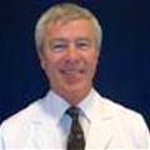
Dr Steven C Thomas MD
OPEN NOW
Today: 9:00 am - 5:00 pm
ACCEPTING
NEW PATIENTS
NEW PATIENTS
Amenities:
Wheelchair accessible
 auto services
auto services beauty
beauty home services
home services insurance
insurance legal services
legal services medical services
medical services pet services
pet services restaurants
restaurants
Phone: (702) 933-9393
Address: 9499 W Charleston Blvd Ste 201, Las Vegas, NV 89117
Website: http://www.knees-shoulders.com